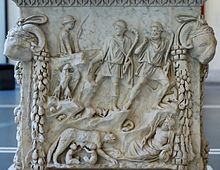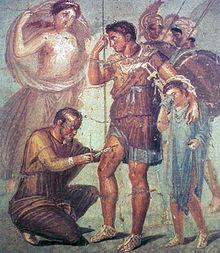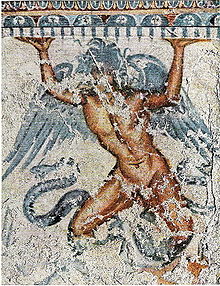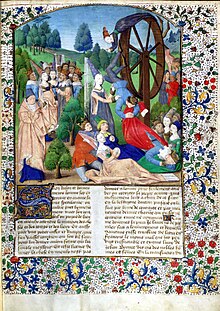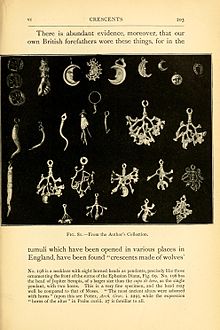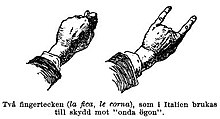
Hercules is the Roman equivalent of the Greek divine hero Heracles, son of Jupiter and the mortal Alcmena. In classical mythology, Hercules is famous for his strength and for his numerous far-ranging adventures.

Acantha is often claimed to be a minor character in Greek mythology whose metamorphosis was the origin of the Acanthus plant. Acantha's myth however does not appear in any classical source.

Febris, or Dea Febris, is the Roman goddess of fevers, who embodied, but also protected people from fever and malaria. Because of this, Febris was a feared goddess whom people wanted the favour of. She does not have a myth of her own nor is she mentioned in a myth. Among her characteristic attributes are "shrewdness" and "honesty", according to Seneca the Younger's Apocolocyntosis.

Etruscan religion comprises a set of stories, beliefs, and religious practices of the Etruscan civilization, heavily influenced by the mythology of ancient Greece, and sharing similarities with concurrent Roman mythology and religion. As the Etruscan civilization was gradually assimilated into the Roman Republic from the 4th century BC, the Etruscan religion and mythology were partially incorporated into ancient Roman culture, following the Roman tendency to absorb some of the local gods and customs of conquered lands. The first attestations of an Etruscan religion can be traced back to the Villanovan culture.

Aita, also spelled Eita, is an epithet of the Etruscan chthonic fire god Śuri as god of the underworld, roughly equivalent to the Greek god Hades.

The evil eye is a supernatural belief in a curse brought about by a malevolent glare, usually inspired by envy. The belief in the evil eye among humans has existed since prehistory, and amulets to protect against it have been found dating to about 5,000 years ago. It is estimated that around 40% of the world's population believes in the evil eye.

Classical mythology, also known as Greco-Roman mythology or Greek and Roman mythology, is the collective body and study of myths from the ancient Greeks and ancient Romans. Mythology, along with philosophy and political thought, is one of the major survivals of classical antiquity throughout later Western culture. The Greek word mythos refers to the spoken word or speech, but it also denotes a tale, story or narrative.
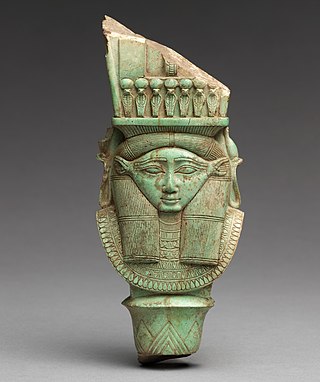
Bat is a cow goddess in Egyptian mythology who was depicted as a human face with cow ears and horns or as a woman. Evidence of the worship of Bat exists from the earliest records of the religious practices in ancient Egypt. By the time of the Middle Kingdom, after the unification of Lower Egypt and Upper Egypt, her identity and attributes were subsumed within that of the goddess Hathor, a similar goddess worshipped in another nome. The imagery of Bat persisted throughout the history of ancient Egypt on the sistrum, a sacred instrument that remained associated with religious practices.

In ancient Roman religion, the Liberalia was the festival of Liber Pater and his consort Libera. The Romans celebrated Liberalia with sacrifices, processions, ribald and gauche songs, and masks which were hung on trees.

Apotropaic magic or protective magic is a type of magic intended to turn away harm or evil influences, as in deflecting misfortune or averting the evil eye. Apotropaic observances may also be practiced out of superstition or out of tradition, as in good luck charms, amulets, or gestures such as crossed fingers or knocking on wood. Many different objects and charms were used for protection throughout history.
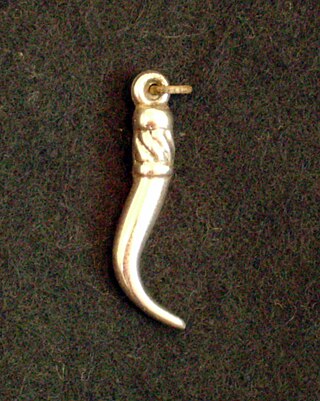
A cornicello, cornetto, corno, or corno portafortuna is an Italian amulet or talisman worn to protect against the evil eye and bad luck in general, and, historically, to promote fertility and virility. In Neapolitan, it is called curniciello or variants thereof. The amulet is also sometimes referred to as the Italian horn.

In ancient Roman religion and magic, the fascinus or fascinum was the embodiment of the divine phallus. The word can refer to phallus effigies and amulets, and to the spells used to invoke his divine protection. Pliny calls it a medicus invidiae, a "doctor" or remedy for envy or the evil eye.

An amulet, also known as a good luck charm or phylactery, is an object believed to confer protection upon its possessor. The word "amulet" comes from the Latin word amuletum, which Pliny's Natural History describes as "an object that protects a person from trouble". Anything can function as an amulet; items commonly so used include statues, coins, drawings, plant parts, animal parts, and written words.

Deities depicted with horns or antlers are found in many religions across the world. In religions that venerate animal deities, horned bulls, goats, and rams may be worshiped as deities or serve as the inspiration for a deity's appearance. Many pagan religions include horned gods in their pantheons, such as Pan in Greek mythology and Ikenga in Odinala. Some neopagan religions have constructed these deities as the Horned God, representing the male part of their duotheistic theological system.
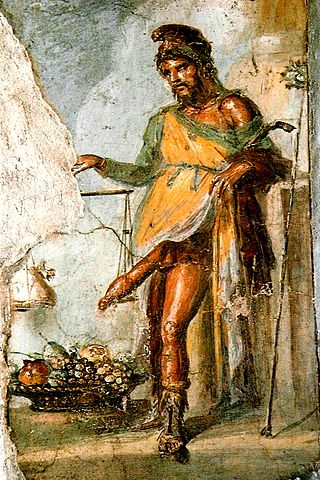
In Greek mythology, Priapus is a minor rustic fertility god, protector of livestock, fruit plants, gardens, and male genitalia. Priapus is marked by his oversized, permanent erection, which gave rise to the medical term priapism. He became a popular figure in Roman erotic art and Latin literature, and is the subject of the often humorously obscene collection of verse called the Priapeia.

Greek mythology is the body of myths originally told by the ancient Greeks, and a genre of ancient Greek folklore, today absorbed alongside Roman mythology into the broader designation of classical mythology. These stories concern the ancient Greek religion's view of the origin and nature of the world; the lives and activities of deities, heroes, and mythological creatures; and the origins and significance of the ancient Greeks' cult and ritual practices. Modern scholars study the myths to shed light on the religious and political institutions of ancient Greece, and to better understand the nature of myth-making itself.

Roman mythology is the body of myths of ancient Rome as represented in the literature and visual arts of the Romans. One of a wide variety of genres of Roman folklore, Roman mythology may also refer to the modern study of these representations, and to the subject matter as represented in the literature and art of other cultures in any period. Roman mythology draws from the mythology of the Italic peoples and ultimately from Proto-Indo-European mythology.

In ancient Rome, a tintinnabulum was a wind chime or assemblage of bells. A tintinnabulum often took the form of a bronze ithyphallic figure or of a fascinum, a magico-religious phallus thought to ward off the evil eye and bring good fortune and prosperity.

Rhodanthe is the name of a supposed Corinthian queen in Greek mythology who attracted a great number of suitors due to her beauty. Her story however is not attested in any ancient Greek or Roman source, and is instead a case of pseudo-mythology.
